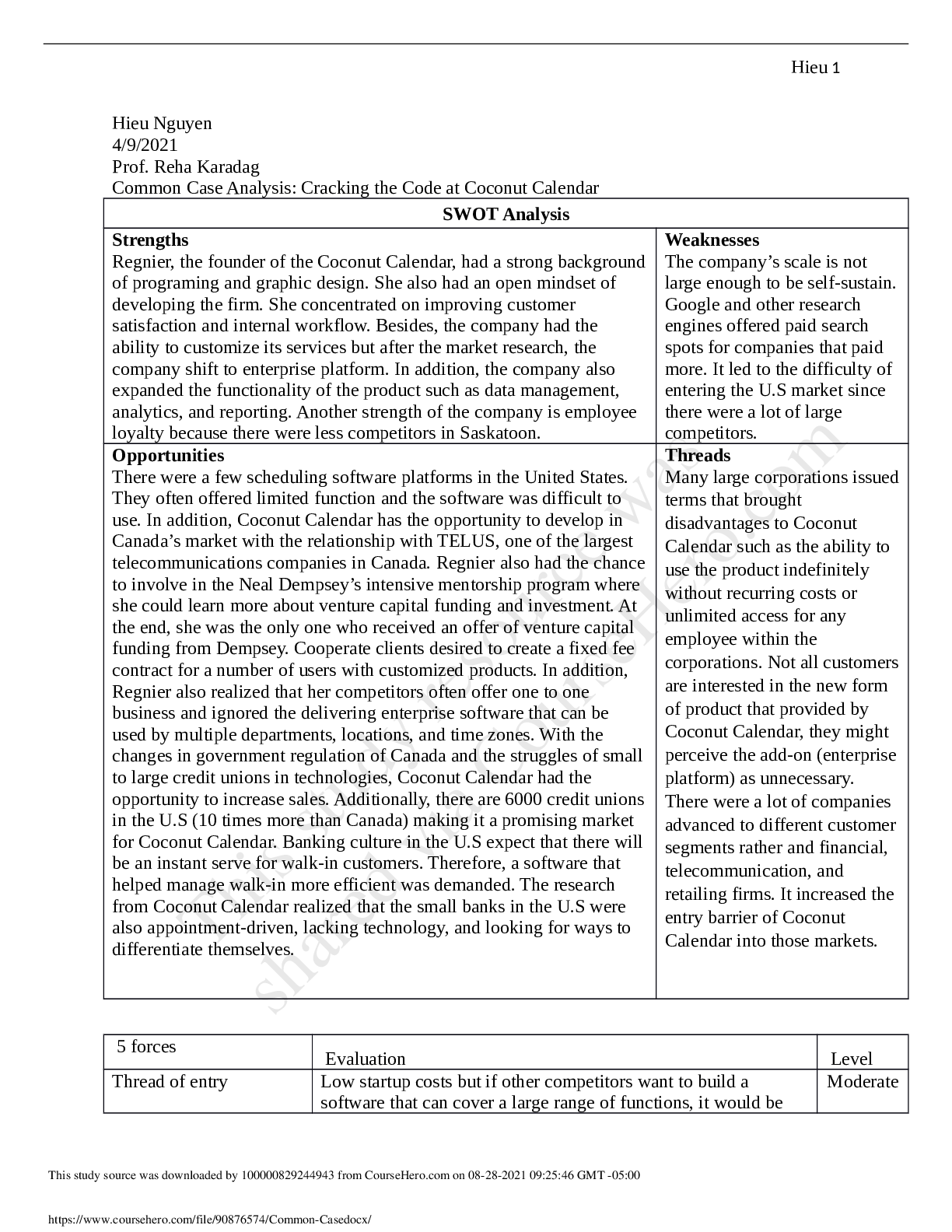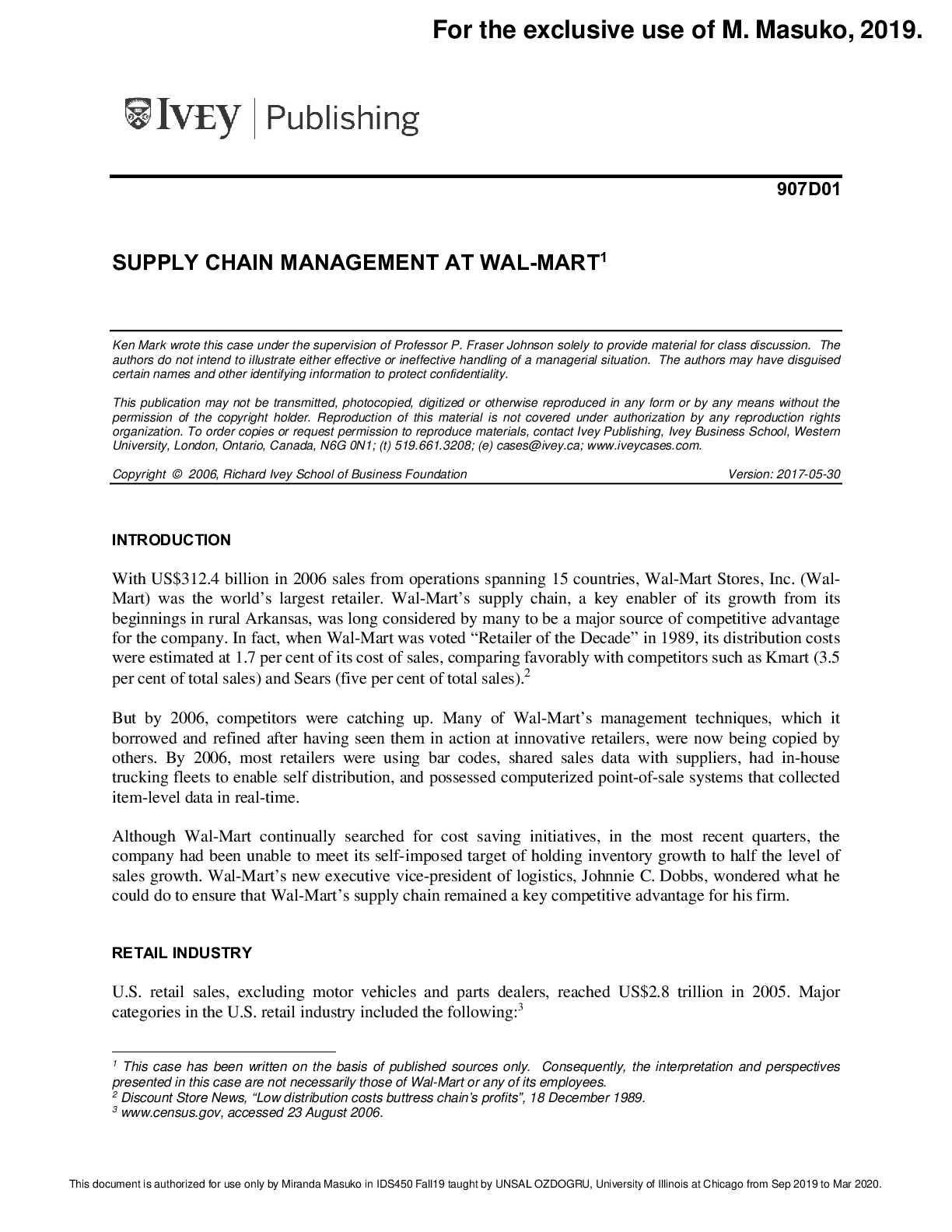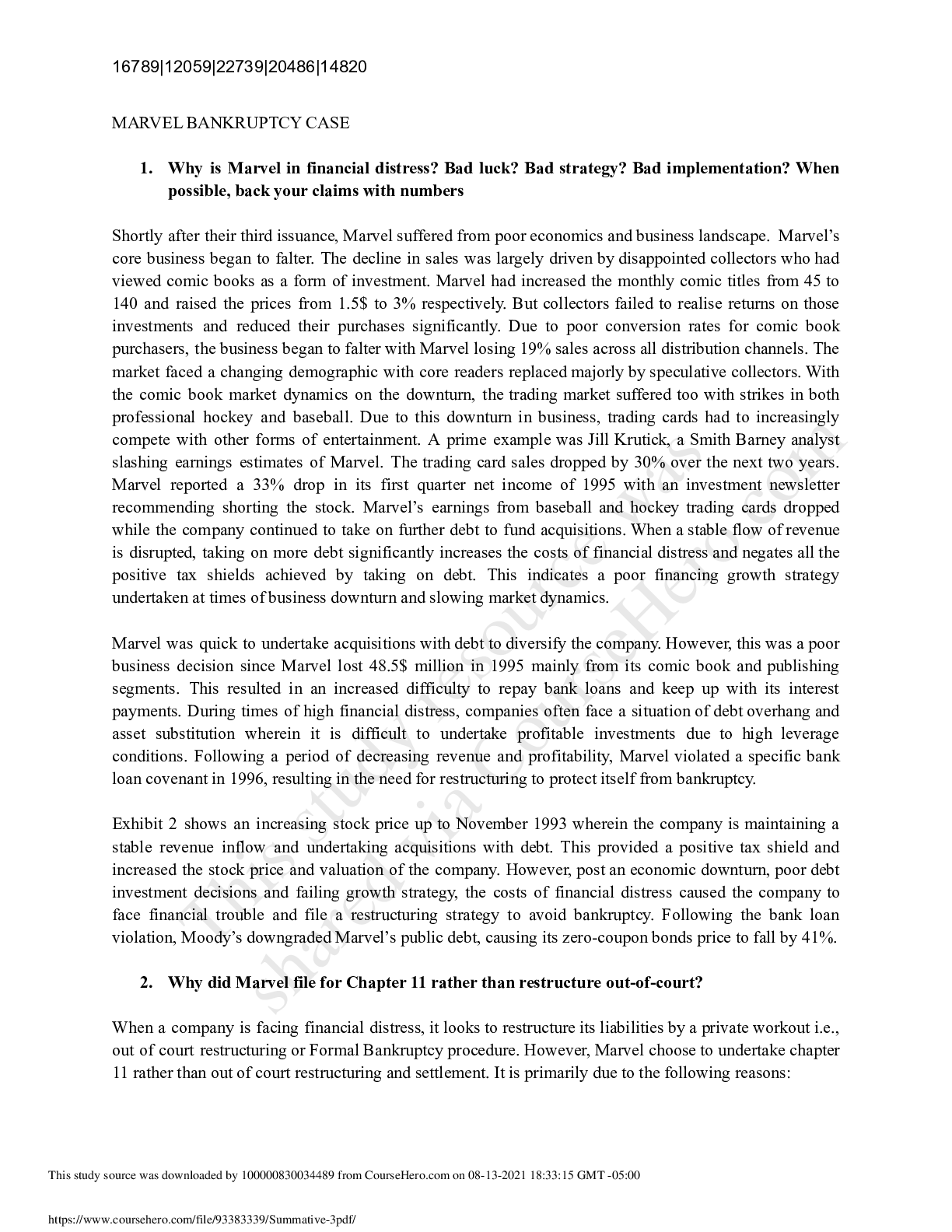Business Management > CASE STUDY > Sweet-Dreams-Inc-Case-analysis Financial Analysis and Forecasting – Sweet Dreams Incorporated (All)
Sweet-Dreams-Inc-Case-analysis Financial Analysis and Forecasting – Sweet Dreams Incorporated
Document Content and Description Below
Case #68 Financial Analysis and Forecasting – Sweet Dreams Incorporated Summary of Case Sweet Dreams Incorporated (SDI) is mattresses and box springs manufacturer in southeastern part of the US.... SDI’s financial problems began with the recession of the early 1990’s. In 1994, under pressure of low sales, inelastic demand, and increased inventories, SDI decided to relax its credit standards and expand its fixed assets funded by taking long-term and short-term loans from the First International Bank. These actions bogged down the company into low sales, large inventory, and high COGS. Having a need to finance its rising inventories, accounts receivable, and having insufficient funds to cover planned asset expansion, SDI began to delay its payments to the First International Bank, its loan supplier. Ingrid Diaz, vice president of First International Bank gave an opportunity for SDI to explain current financial situation and to show the bank a tactical plan to recover stable financial position. Question 1 Complete the 1995 columns of Tables 3 through 6, disregarding for now the projected data in the 1996 and 1997 columns. If you are using the spreadsheet model, use it to complete the tables. Be sure you understand all the numbers, as it would be embarrassing (and harmful to your career) if you were asked how you got a particular number and you could not give a meaningful response. Question 2 On the basis of information in the case and on the results of your calculations in Question 1, list SDI’s strengths and weaknesses. In essence, you should look at the common size statements and each group of key ratios (for example, the liquidity ratios) and see what those ratios indicate about the company’s operations and financial condition. As a part of your answer, use the extended DuPont equation to highlight the key relationship. Question 3 Recognizing that you might want to revise your opinion later, does it appear, based on your analysis of historical data, that the bank should lend the requested money to SDI? In other words, if you were working for the bank, would you recommend that it meet SDI’s request and increase the line of credit? Explain. Question 4 Case #68 Andrii Korchuk & Hilary Taube Page 8 Now complete the tables to develop pro forma financial statements for the 1996 and 1997. In making these calculations, assume that the bank is willing to maintain the present credit lines and to grant the requested additional $9,500,000 of short-term credit effective January 1, 1996. In the analysis, take account of the amounts of inventory and accounts receivable that would be carried if inventory utilization (based on the cost of goods sold) and days sales outstanding were set at industry-average levels. Also, assume in your forecast that all of SDI’s plans and predictions concerning sales and expenses materialize, and that the firm pays no cash dividends during the forecast period. Finally, in your calculations use the cash and marketable securities account as the residual balancing figure. Question 5 Assume SDI has determined that its optimal cash balance is 5 percent of sales, and that funds in excess of this amount will be invested in marketable securities, which on average will earn 5 percent interest. Based on your forecasted financial statements, will SDI be able to invest in marketable securities in 1996 and 1997? If so, how much excess funds will SDI have available for investment in marketable securities? Do your financial forecasts reveal any developing conditions that should be corrected? Question 6 On the basis of forecasts developed earlier, does it appear that SDI will be able to retire all of its outstanding short-term loans by December 31, 1997? In answering this question, assume that the firm will, if possible, repay the loans at a constant rate throughout the year. Therefore, on average, the amount of the short-term loans outstanding will be half of the beginning-of-year amount. Question 7 If the bank decides to withdraw the entire line of credit and to demand immediate repayment of the two existing loans (the short-term and the long-term loans) extended to SDI, what alternatives would be available to SDI? Question 8 Under what circumstances might the validity of comparative ratio analysis be questionable? Answer this question in general, not just for SDI, but use SDI data to illustrate your points. Question 11 On the basis of your analyses, do you think Ingrid should recommend that the bank extend existing short and long-term loans and grant the additional $9,500,000 loan, or should she recommend that the bank demand immediate repayment of all existing loans? If she does recommend continuing to support the company, what conditions (for example, collateral, guarantees, or other safeguards) might the bank impose to help protect against losses should SDI’s plans go awry? [Show More]
Last updated: 2 years ago
Preview 1 out of 13 pages
.png)
Buy this document to get the full access instantly
Instant Download Access after purchase
Buy NowInstant download
We Accept:

Reviews( 0 )
$12.00
Can't find what you want? Try our AI powered Search
Document information
Connected school, study & course
About the document
Uploaded On
Jun 12, 2021
Number of pages
13
Written in
Additional information
This document has been written for:
Uploaded
Jun 12, 2021
Downloads
0
Views
146














